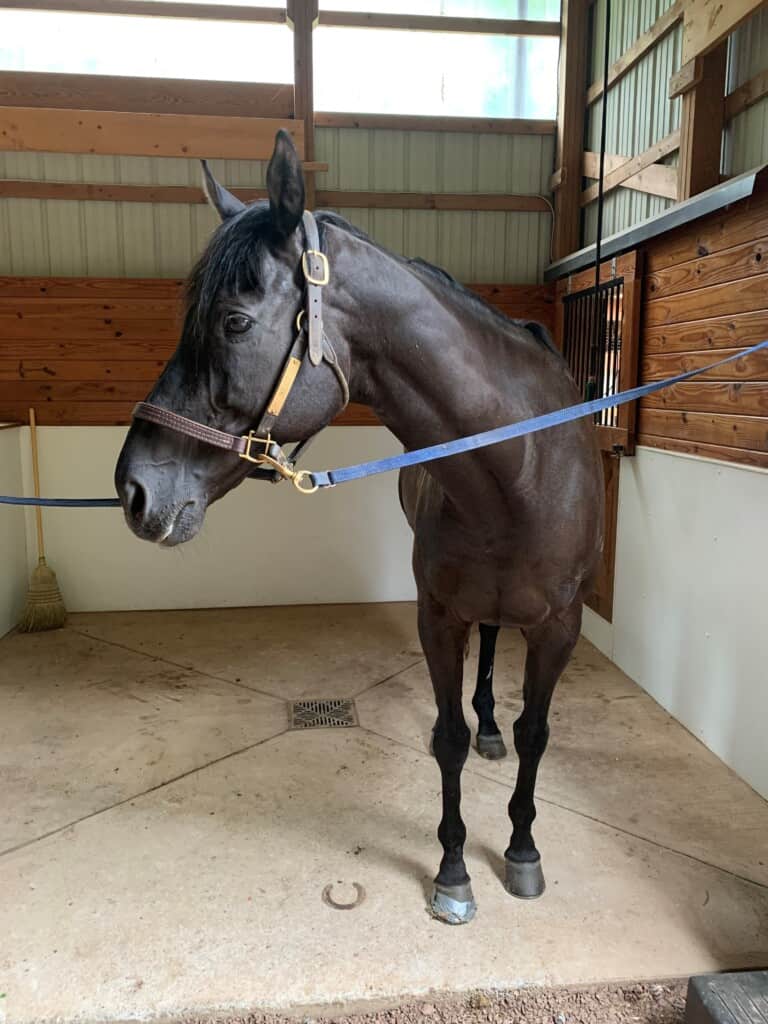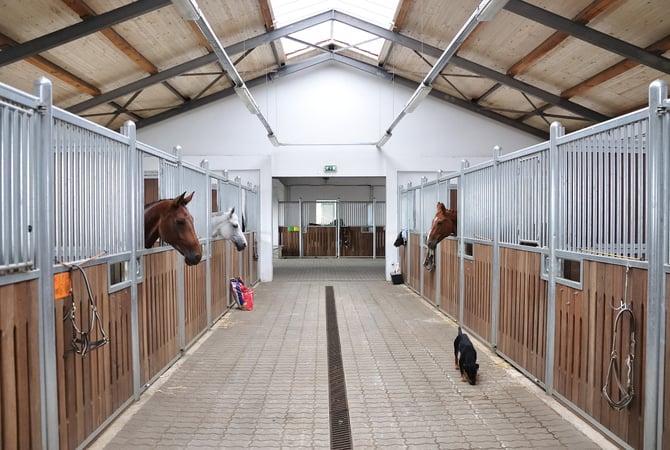A customer reached out to
us after a troubling incident
involving a plastic grate
in her horse barn.

The customer initially thought that we were the manufacturer of the grate but had purchased it from one of the big box stores. We weren’t provided with detailed information about the occurrence but were informed that her horse’s leg went through the grate and fell. The grate pinched around its hind leg causing the horse to panic and it had to be sedated. Thankfully, her veterinarian and farrier were on site to assist her in cutting off the grate. The horse sustained minor scrapes and was understandably spooked.
Her goal in reaching out to us was to ensure that something like this doesn’t occur for other horse owners. She couldn’t understand why the grate failed because it was rated for 3,000 pounds and the horse only weighs 1,000 pounds. The grate was replaced by a metal plate that was created at a local fab shop. This incident is definitely worthy of sharing for many reasons. This situation is unique because this particular grate had been in place for three years without any previous issues.
This situation provided us with an opportunity to look at the challenges faced when planning wash bay drainage for larger animals.
UNDERSTANDING LOAD CLASS
It’s important to share that the grate is rated for 3,000 pounds of rolling weight. Meaning, that it’s a load rating for vehicle traffic that will be moving and will have the weight distributed by the tires. It stands to reason that the grate would take the weight of a horse but that’s far from the truth. The difference is 1,000 pounds standing stationary directly on the grate for an undetermined amount of time. This isn’t something the grate is designed for.
ENVIRONMENTAL VARIABLES
Other unknown factors would be the outside temperature and any additional heat sources such as warm water from bathing the animal could affect the pliability of the plastic. Another possible scenario is if the horse was having shoes replaced and was positioned with one foot on top of the grate while the other hind leg was being maintained.
DRAIN LOCATION
Another consideration is the position of the drain. The logical position is to place the drain in the center with the floor sloping to it. However, placing the drain towards the back or back corner would accomplish several goals. First, maintaining the stall will be easier since a hose can be used to push all of the water and debris to the back of the space. Sloping the floor to the drain would assist with this effort. The second advantage is that chances are minimal that the drain would have livestock or individuals standing directly upon the grate.
OTHER CONSIDERATIONS
Depending upon the type of feet the livestock has, (padded feet vs. hooves) consider the surface of the grate as well. Smoother surfaces can be slippery when wet while others offer raised designs or, in some cases, a sand-like grit to allow for foot-friendly surfaces.
TAKE AWAYS
_____________________
- If you have an existing drain, avoid having animals stand directly on top of the grating.
- Keep in mind that load class ratings for grates are based on moving weight of vehicles.
- When possible, locate drains to the back of the area close to the wall with the floor sloping to the drain.
_____________________
The experts at TDS can help you find the right drains to fit your plan and budget. Contact us for a free quote or for further information on drainage solutions visit TrenchDrain.com or DrainageKits.com.
Phone: 610-882-3630
Email: Shop@TrenchDrain.com

